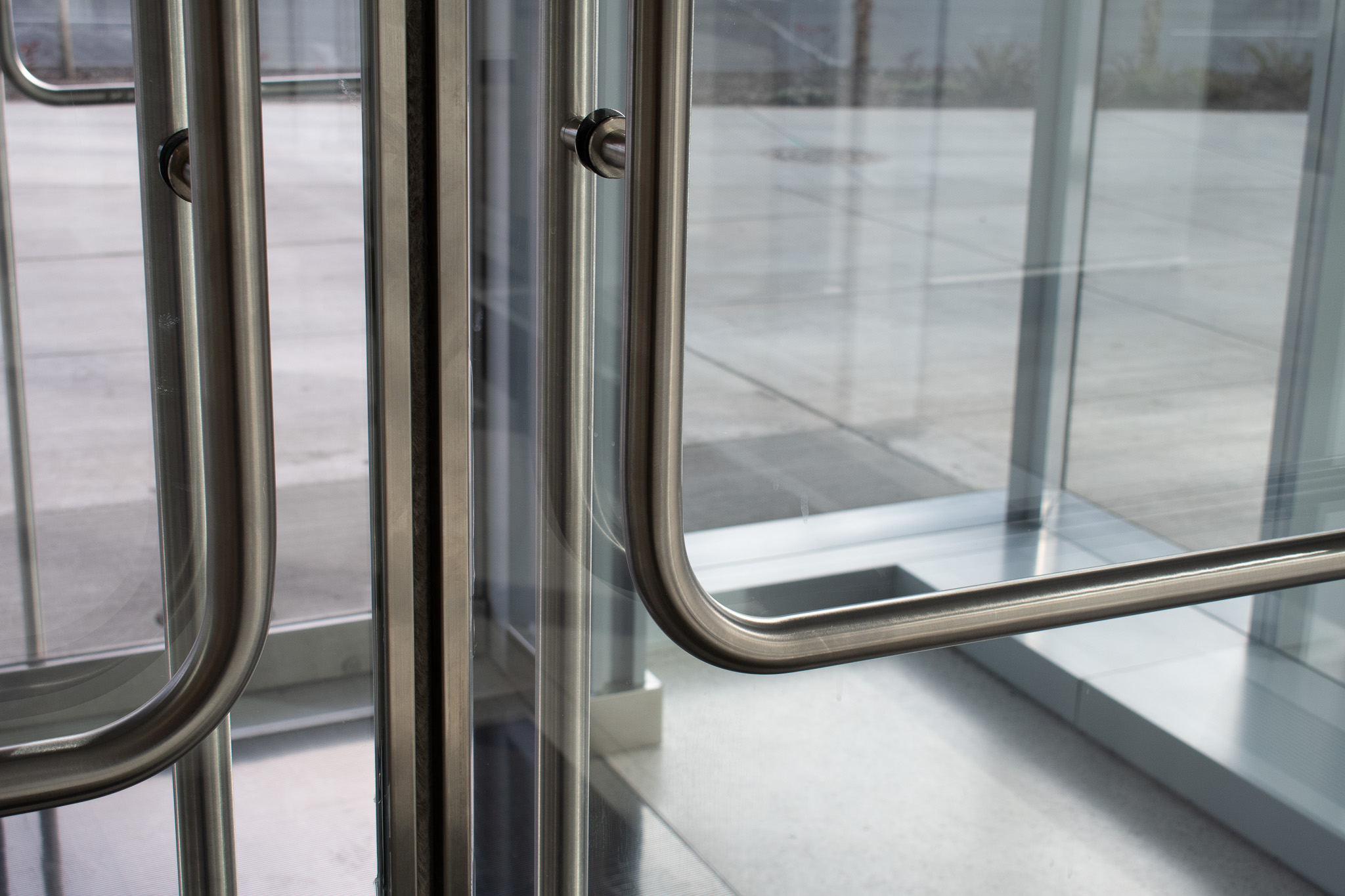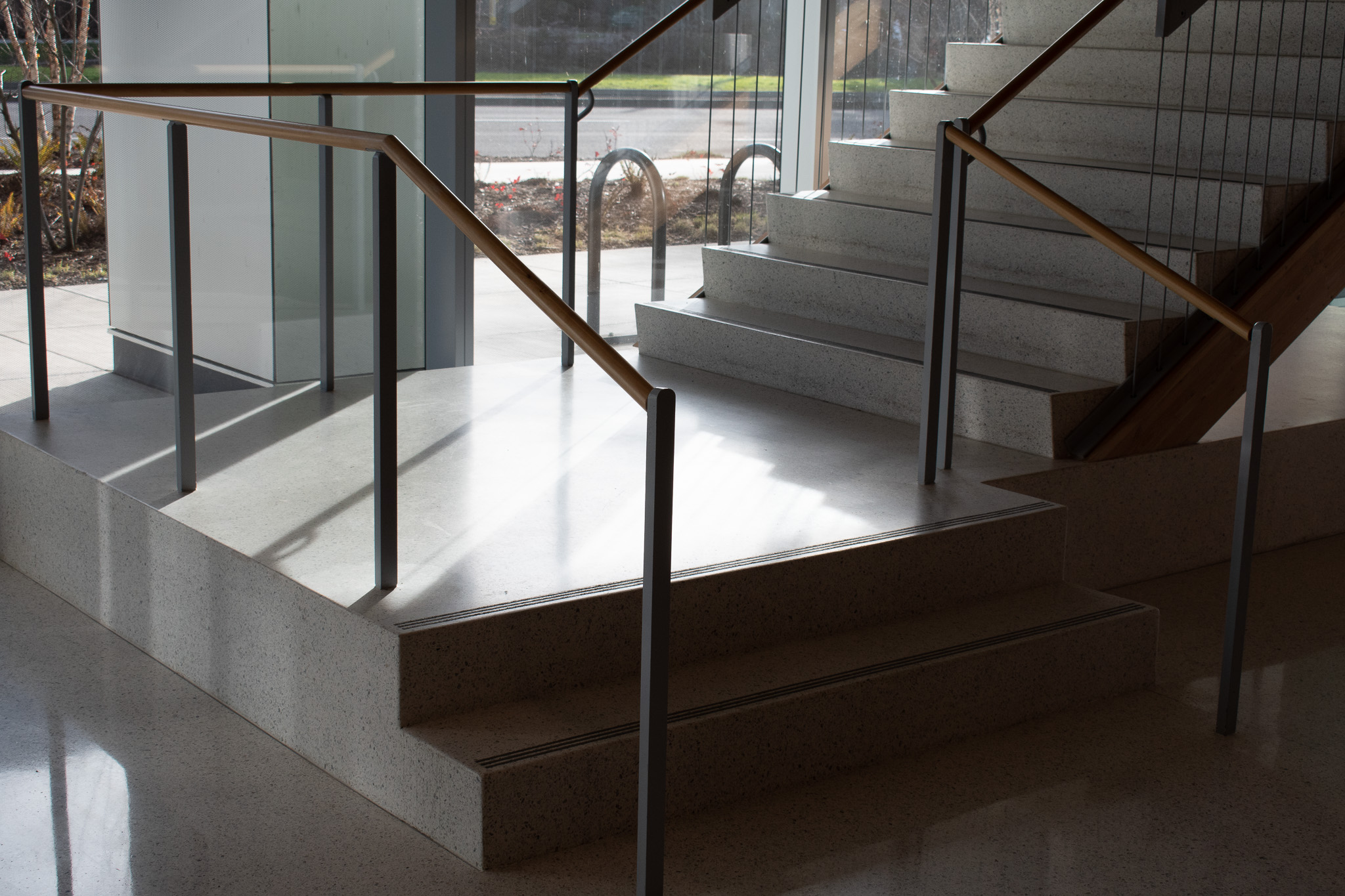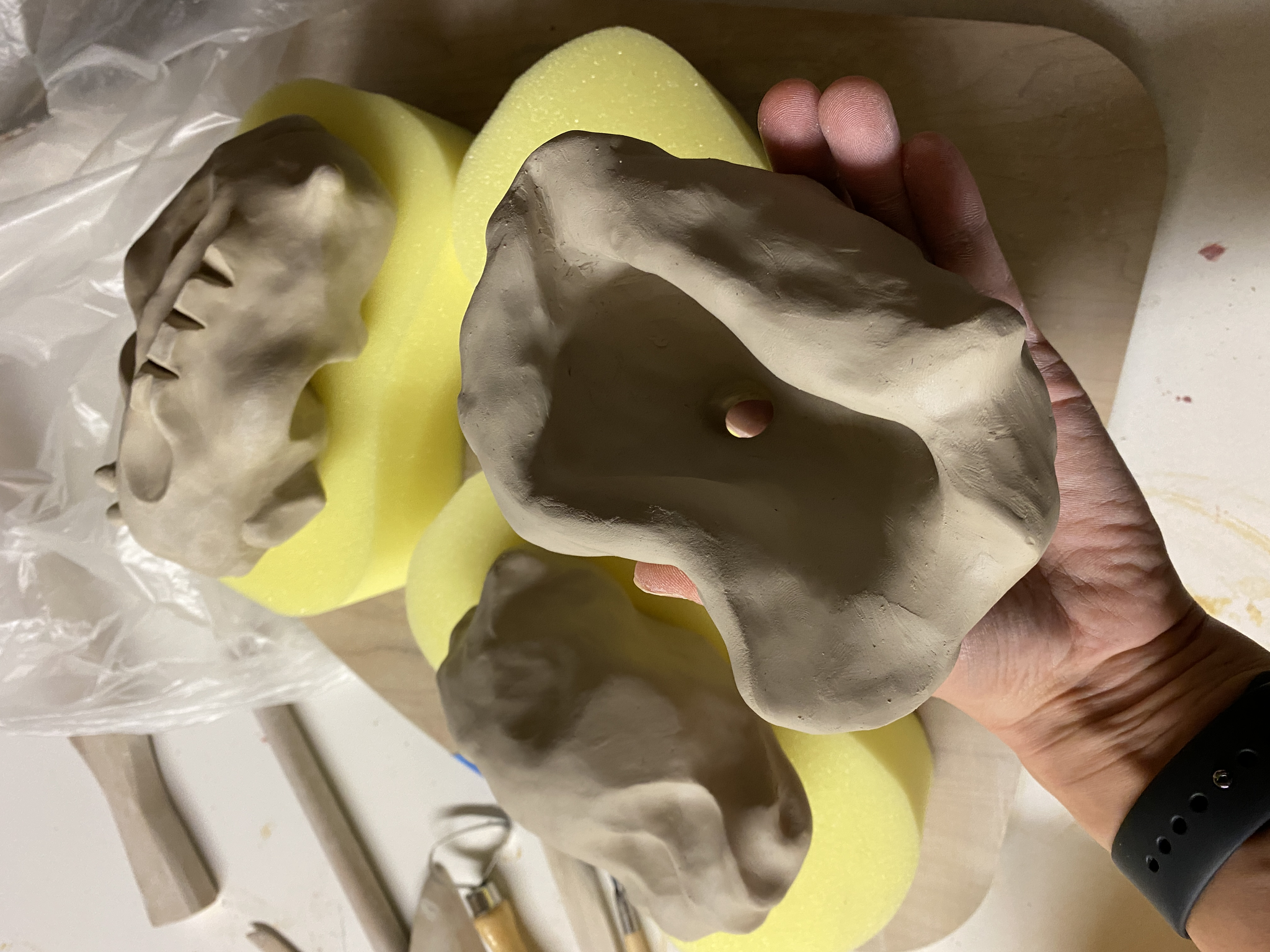How does form influence the movement of bodies? What are the parameters at play and how is perception implicated in the formal qualities of objects and environments? These are some of the questions which were prompted by my own previous research and subsequent exhibition "there is something here" in the spring of 2022, as part of my terminal creative project for the MFA in Fine Art at the University of Oregon. This exhibition included a performance recorded in 360 degrees and presented through a virtual reality headset in the exhibition space. In investigating embodiment, spectatorship and mediation through this work, I was struck by the capacity of spectators to inhabit a space and time beyond their immediate surroundings, to be transported, and for that transportation to be felt in the body rather than simply being understood intellectually and from a safe distance.
In addition to these research questions, I entered the project presented in this exposition with multiple sources in mind, all in some way to do with relationality, but also to do with improvisation, skilled manipulation, and virtuality. In considering my own practice as a performance artist engaging with technology and site or environment above all, the feedback between doing and feeling, impulse and choreography, was at the core of this inquiry, as it is for my work more generally.
My methodology derives from a studio practice in art where a number of influences and inspirations are collected over time to form the foundation of an improvisational inquiry that is nonlinear in nature. An assemblage of ideas is woven together through my subjective interpretations and intuitions with the objective of better understanding human understanding and capacity, especially in relation to contemporary media technologies and their uses. Multimedia experimentation is one component of my method, as is textual analysis and philosophical inquiry, creative writing and movement improvisation where I employ my body in exploring ideas within a given frame, whether that is in response to a particular sound, space or overarching bodily orientation such as focusing on the mechanics and extension of extremities. "What can a body do?" is a guiding question in my work.
This particular project included three individual but related strands: 1) the development of a choreographical score or movement pattern based on the physical surroundings of a particular space, 2) the creation of sculptural objects in response to manual manipulation of material (clay), and 3) theorization around the experience of form as a mediation between interior and exterior space based on the previous two points.
This research took place under the auspices of the Center for Art Research Project Incubator Fellowship at the Phil and Penny Knight Campus for Accelerating Scientific Impact at the University of Oregon in the spring of 2023 and was influenced by my physical surroundings while in residence for the month of February. My intention was to explore the affordances of the newly-constructed building itself (Figure 2 and Figure 3) in order to generate a movement score or choreography. Instead, I was struck by the smoothness of that environment and the subsequent lack of imperatives to action. Almost as though it were a digital space, my body was positioned to glide through it without getting caught anywhere. A seemingly accessible, open space with little to grab onto. A sense of freedom but also of unmooring. What does such a space do to public agency? How do we encounter each other and what do we feel compelled to do in such a space? It enacts a kind of homogenization and sedation, calming the sensory system and turning us inwards, towards virtuality. Scale plays into this sense of distance and lack of relation between body and surroundings. Surfaces are far away, often unreachable, instead prompting a projection of ourselves onto their form and texture as they project back onto our embodied experience of space and the potential for action.
Seeds for this project came from the cybernetic relation between human and machine as described by Norbert Wiener in his pivotal work Cybernetics or Communication & Control in the Animal & the Machine [1961] (2019) and from Alicia Juarrero’s theory of the dynamics of action and behavior visualized as a landscape with ridges and basins (2002, p. 153). She describes a geography of attractors that constitute a terrain of probability of action, where motor development is a process of dynamical self-organization based on ongoing interactions between organism and environment—this process can be pictured as an “ontogenetic landscape.” (Juarrero, 2022, p. 158) In picturing this relationality between action and milieu, I began to think of the correspondence between physical shape and touch, what kinds of forms solicit touch and the interplay of grasping and understanding, leading me further to the work of Vilém Flusser and his writing on the “technical image.” Flusser (2011) argues that the turn toward the pictorial and away from the linearity of text is not a return to a prehistory, but rather, that we are emerging “into a posthistorical, dimensionless state.” (p. 6) He says, “When images supplant texts, we experience, perceive, and value the world and ourselves differently, no longer in a one-dimensional, linear, process-oriented, historical way but rather in a two-dimensional way, as surface, context, scene. And our behavior changes: it is no longer dramatic but embedded in fields of relationships.” (Flusser, 2011, p. 5) This last point is crucial to my work with virtual and physical forms, through which I have come to understand the primacy of relation as the connecting principle of our time, and as the bridge linking the virtual and physical. The difference between traditional images and technical images for Flusser (2011), is that the latter derive from text and do not constitute a continuous (analog) surface but are made up of particles, discontinuous and therefore infinitely scalable, without inherent dimension (p. 6). These particles cannot be directly grasped but can only be understood through calculation and computation. To my mind, our understanding and use of these images necessarily involves projection in the way Giuliana Bruno (2022) describes it: as sympathy, empathy, and dwelling in exteriority, projecting ourselves onto surfaces beyond our reach.
As Bruno writes in Atmospheres of Projection: Environmentality in Art and Screen Media (2022), the problem of immersion is its potential for smoothing out difference, a passive experience of the world as existing solely for you where the affective act of projection comes to a halt (p. 113). However, immersion can also be a kind of inhabitation and dwelling in the world where a sensuous familiarity with space facilitates connection. In this case, immersion can be seen as an active, reciprocal process between organism and environment. This dual nature of immersion is for me linked to improvisation in movement and performance. When in the midst of a performance, is there room for spontaneous change? Does the setup invite and allow for disruptive action or is it a continuous flow state? Is my body moving along pre-laid tracks of feeling or is my agency involved in altering the course of the movement? There is a self-reflexivity at play as I move in relation to my own body, a constant negotiation of feedback and impulse, a dynamic of flow and cut, proximity and distance to my own actions.
The movement score I was developing during my fellowship at the Knight Campus developed into a performance which was conceived as existing between virtual and physical space. I construed for myself an imagined three-dimensional grid space within which to move—the stage area. I used projection to bring the virtual into the real and turned the real virtual by codifying the movements of my body, exploring the mechanics of my body and the articulation of my joints. I used my body as a tool for articulating the space of action as defined by the stage area, reaching into space away from myself, toward the boundaries of this space, thereby situating myself more squarely in it. By interacting with the screen space of the projection and the projection of my own silhouette onto it, I wanted to bring the two spheres of virtual and physical together, transgressing the uncanny boundary we often take for granted. As Bruno (2022) says, projection is already a crossover space, forming a seam with the inanimate.
The projection itself is a simple computer-generated 3D animation of a rotating and randomly morphing sphere hovering above a diffuse ground within a hazy atmosphere (Figure 4). All a shade of dull white without any textures applied to it, there is no mistake—this is a purely virtual, artificially created, form. Yet, when paired with my living body in physical space through projection, the form takes on some sense of agency by association. There is a dynamic to the morphing of the sphere, which at times moves faster and slower, giving the impression of a call and response between my movements in front of it and the speed of its own shifting. At the beginning of the performance, I establish the relation between us by directly engaging with it, as seen in the video above (Figure 4).
One of the ways in which I approached the choreography was through a visit to the Motor Skill Lab at the University of Oregon, directed by Dr. Michelle Marneweck. I was mainly interested in how the lab structures their experiments and was struck by the similarity between the simple, typed-up instructions that to me resembled a protocol of sorts, and my own dance notation. Stripped of feeling, they describe gestures mechanically and impersonally, with clearly defined parameters and objectives. The instructions are task-based and have to do with the relation between vision and action, attention and anticipation based on visual cues and sensory feedback. The experiments take place in a room lined with copper mesh to eliminate electronic interference from the measurements of brain activity, just as I imagined my performance space as a gridded coordinate system, artificially separated from the world around.
Besides the visual of the projection, the performance also involved a soundtrack specially created for it (as can be heard in the video in Figure 5). Consisting of basic sine waves at different frequencies, repeated and looped at different intervals, and laced with generated noise, the soundtrack also included a recorded libretto, typed out below. The spoken piece is repeated a few times throughout the performance, in different versions. The first time we hear it, it sounds like a natural voice, albeit somewhat affected towards the artificial à la Siri or another virtual assistant. This voice is then multiplied digitally, bifurcated, and warped into multiple and shifting tonalities with the help of audio software.
A handheld device to feel, touch. Smooth, curved, jagged, prickly, coarse, striated, dimpled, cool, light, heavy—its weight in the palm of your hand. It drags you down to the floor, your body takes the shape of the device, forms around it to accommodate its strangeness until it’s not strange anymore—a part of your body like any other—natural. An extension, a limb, a sensory device, producing feedback. Swimming around in a sea of light and air, the terrain all-encompassing.
Why is noise important in the audio of this piece? Going back to the idea of cybernetics, I would like to dwell for a moment on the entangled relation of information and noise. Novelty and variation require noise, and in fact information always contains some level of noise. As Cecile Malaspina (2018) explains, in Claude Shannon’s definition of information, information can only be designated as such if it brings something unpredictable. Counterintuitively, uncertainty is integral to information, not only to noise. “Contrary to Wiener’s definition of information as the negation of entropy, for Shannon, greater information goes hand in hand with greater uncertainty.” (Malaspina, 2018, p. 16) There is always seepage between the two as they are defined in relation to each other. In an analogous way, the virtual contains the real and the real contains the virtual in what could be visualized as a Mobius strip. “In vivo, rather than in the well specified and controlled situation of the channel of communication, the distinction between information and noise is never ready-made, but always presents itself as a vital decision or as an epistemological problem.” (Malaspina, 2018, p. 18) The perceived liveliness of the projected shapeshifting form in my performance is due in part to the irregular pattern of movement or noise of its surface. In the audio, noise is used as an atmospheric device to coalesce the space and “thicken” it, allowing it to become a medium for connection between screen and flesh, audience and performance.
Thinking once again about affordances and the built environment, I am struck by Henning Schmidgen’s discussion of the work of artist Rebecca Horn, and in particular the role of restraint and obstruction in her work. As Schmidgen (2022) points out, “The obstruction, arbitrarily posited and accepted, opens up new experiences.” (p. 31) The body of the artist is made immobile yet sensitized in works such as Overflowing Blood Machine (1970) and Measure Box (1970) through a recursion of feeling—the body feels the restriction but also its own self-reflexive feeling of the sensation. This cybernetic idea is also present in works such as Arm Extensions (1968) where Horn's body is in contact with the walls of the room through prosthetic extensions that allow for a specific mediation while restricting her general movement. The intimacy of touch is central to this work. It is this idea of restraint as liberation I come back to when considering the space of the Knight Campus and its smooth openness. How are bodies situated in this space? How can liveliness and noise enter?
Another outcome of my research as part of the CPI fellowship was a set of “handheld devices” that I made out of clay (Figure 6). In the making of these objects, I was guided by the physical sensation of the clay in hands, working a lump of clay sized to fit my grasp. The goal was to add variation to the surface of the forms, something for the fingers to explore—buttons, ridges, indentations, holes, and curves. The resulting forms came to resemble organic creatures, something I had not anticipated. This prompted the realization that our human hands are made to touch other organic forms, that affordances for our bodies are other bodies. These forms are the result of a transmission of form from my hands and tools and embodiment to the clay, which was then laser scanned to create digital 3D renderings (Figure 7). Digital to digital. From physical touch to a projection of touch, these forms can now be interacted with only through the interface of computation, they have become technical images. As quoted by Bruno (2022), Flusser says, “Technical images are projections.” (p. 1) Projection is an act of “public intimacy”— “a moving place between intimal and external, subjective and objective, private and public.” (Bruno, 2022, p. 7) Perhaps it is through projection that we can bridge the distances presented by the scientific and the institutional? Just as information and noise are co-constitutive, distance and intimacy exist in inextricable relation to each other. The sculptor Phyllida Barlow once said that she does not want viewers to touch her works, no matter how tactile, because to actually touch a sculpture closes off the imagination (Green, 2023). It is a more complex and interesting experience to be drawn to touch, to project touch without actually touching. Distance here functions as a mediator for the imagination, a necessary component of the work.
A speculative outcome of this work is an augmented reality piece that overlays enlarged scans of the handheld devices onto the interior architecture of the Knight Campus (Figure 8). This may prompt reflection on the unseen influence of form on behavior through the juxtaposition of the virtual organic and the Cartesian real. Further, by making it accessible through a mobile application, attention would be drawn to the technological mediation of the experience, emphasizing that aspect of the research project and highlighting the link between projection in Giuliana Bruno’s conception of the term and the technical image as described by Flusser. Though not yet realized, this speculative outcome provides the next step in the development of this project and the research presented in this exposition. Perhaps it is fitting to conclude with this appeal to the imagination—an invitation to project an experience of touch onto virtual form and a re-conception of distance as a space of possibility where intimacy is imminently present.
References
Bruno, G. 2022. Atmospheres of Projection: Environmentality in Art and Screen Media. University of Chicago Press.
Flusser, V. [1985] 2011. Into the Universe of Technical Images. University of Minnesota Press.
Green, T. (Host). (2023, March 16). No. 593: Phyllida Barlow [Audio podcast episode]. In The Modern Art Notes Podcast.
https://manpodcast.com/portfolio/no-593-phyllida-barlow/
Juarrero, A. 2002. “Chapter 10: Dynamical Constraints as Landscapes: Meaning and Behavior as Topology,” Dynamics in Action: Intentional Behavior as a Complex System. The MIT Press.
Malaspina, C. 2018. An Epistemology of Noise. Bloomsbury Academic.
Schmidgen, H. 2022. Horn, or the Counterside of Media. Duke University Press.
Wiener, N. [1961] 2019. Cybernetics or Communication & Control in the Animal & the Machine. The MIT Press.




